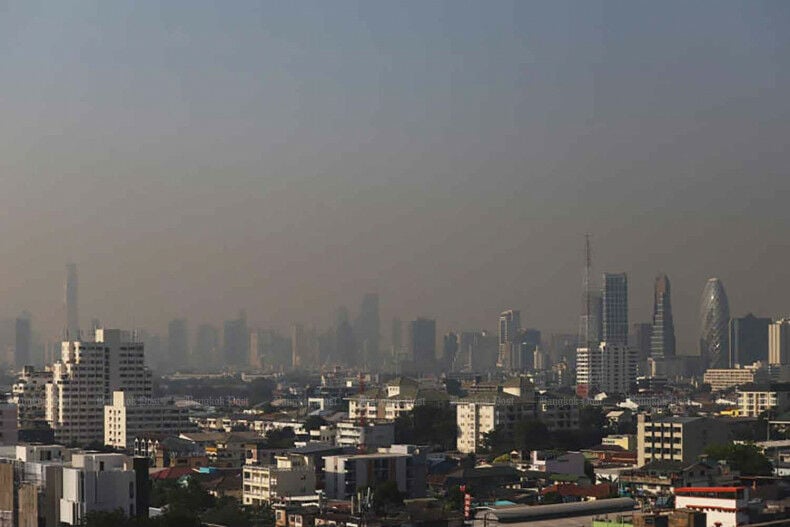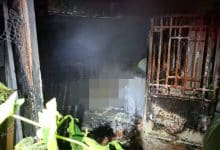Bangkok blanketed in toxic air: Emergency work-from-home orders issued

As the dense smog engulfs Bangkok with toxic air levels skyrocketing past safety thresholds, authorities urgently call for remote work, revealing shocking pollution statistics.
In a directive by Bangkok Governor Chadchart Sittipunt, the Bangkok Metropolitan Administration (BMA) urged state entities and private firms to enact emergency measures, allowing their employees to work remotely today and tomorrow.
“AirBKK, the city’s air quality watchdog, revealed alarming data with PM2.5 levels surpassing 75 microgrammes per cubic metre (µg/m³) across 20 districts.”
A stark contrast to the safe threshold of 37.5 µg/m³, this surge in fine particulate matter rings alarm bells, painting a grim picture for Bangkok’s residents.
Notably, the directive targets 151 public and private organisations, encompassing a workforce of over 60,000 individuals, urging them to embrace telecommuting to mitigate exposure risks. However, amidst the haze of uncertainty, schools under the BMA’s jurisdiction remain open, equipped with designated safe zones to shield students and staff from hazardous pollutants.
A glance at the statistics churned out by AirBKK, the BMA’s air quality sentinel, reveals a harrowing reality. Klong Sam Wa, Thawi Watthana, Thon Buri, Bangkok Noi, and more, stand among the 20 districts gripped by the suffocating embrace of PM2.5 pollution. As the smog tightens its grip, citizens are implored to stay abreast of the air quality index via AirBKK’s Line Alert service.
The forecast delivered by the Pollution Control Department (PCD) casts a shadow over Bangkok and its outlying regions, projecting a worsening PM2.5 predicament until Saturday. The Meteorological Department of Thailand adds to the gloom, attributing air stagnation as a catalyst fuelling the surge in PM2.5 pollution, a phenomenon slated to persist, reported Bangkok Post.
Amidst the chaos, the PCD reports a staggering 3,241 fire hotspots detected across central and northeast regions between Saturday and Tuesday, with a further 14,939 flaring up in neighbouring Cambodia.
Collaborative efforts, spearheaded by organisations including the Geo-Informatics and Space Technology Development Agency, paint a dire picture, branding 39 Thai provinces as PM2.5 red zones, with Bangkok itself witnessing 40 out of 50 districts engulfed in a haze of hazardous particles, posing a grave threat to the populace’s health and well-being.
Latest Thailand News
Follow The Thaiger on Google News:


























